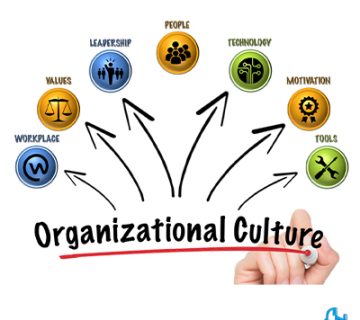
Introduction
The corona virus has not only created a health crisis on a huge scale, but it has also caused the imminent restructuring of the global economic system. In this article, it is pointed out that how should the leaders and managers of the organization start the next move?
“For some organizations, short-term survival is on the agenda. Other organizations are looking to the future from a foggy atmosphere of uncertainty and wondering how to position themselves after the crisis and back to normal. The main question is, “What would normal conditions be?” While no one can say how long this crisis will last, what we find on the other side will not be similar to the normal state we have seen in recent years. “
These words were written 11 years ago during the last global economic crisis by a member of Mackenzie’s management. These words apply to the current situation, the situation that the world is facing cannot be understood and predicted.
It is increasingly clear that our era is defined by a fundamental divide: The period before COVID-19 and the new normal that is emerging in the post-coronavirus era: which can be called “next natural”. In this new and unprecedented reality, we will witness a dramatic reconstruction of the economic and social order in which business and society have traditionally operated. And in the near future, we will see the beginning of a debate about what new normal conditions might emerge and how sharply it will differ from what previously shaped our lives.
Here, we try to answer this question, which leaders in the public, private and social sectors ask:
“Now that our traditional criteria and assumptions have been ineffective, what steps should be taken to navigate this crisis? ”
Simply put, it is our turn to answer the question that many of us once asked our fathers and grandfathers:
“What did you do during the war?”
Our response is a call to managers and leaders to act in five steps, moving from today’s crisis to the “next normal” that will emerge after the battle against the coronavirus is won:
The next five steps
-
solve
-
resilience
-
coming back
-
Reincarnation
-
Reforms
The duration of each phase will vary based on the geographic context and industry being studied, and organizations may find themselves in a situation where they are implementing and completing more than one phase simultaneously. In recent days, a group of Mackenzie consultants “Protecting our lives and livelihoods: “The Necessity of Our Time,” which emphasizes the need to resolve the current virus and economic situation by focusing on envisioning a post-pandemic future.
Collectively, these five steps represent the imperatives of our time: Leaders must win the battle against the coronavirus today if we are to find a sustainable economic and social path to the next normal.
1. Decision to solve the issue
In almost all countries, efforts are underway to respond to the current crisis. A large number of public health facilities have been established. Healthcare systems are specially prepared to increase their capacity in beds, equipment and trained manpower. Efforts are underway to alleviate the shortage of needed medical supplies. Business continuity plans and employee safety have increased with remote work set as the default operating mode. Many organizations are dealing with significant slowdowns in their work, while some are looking to accelerate demand in critical areas that include food, home appliances, and cellulosic goods. As physical classrooms shut down, educational institutions are moving online to provide continuous learning opportunities. This is the stage where leaders are currently focused.
However, there remains a toxic mix of immobility and paralysis, preventive decisions that must be made:
whether or not to shut down, isolate or quarantine; Shutting down the factory or waiting for orders from above.
That’s why we call this step the decision to solve: The need to determine the scale, speed and depth of necessary measures at the level of the existing situation and business. As one CEO told us: “I know what to do. I just have to decide if those who have to act have my decision to do so. ”
-
resilience
This corona epidemic (Pandemic) has become a beginning for the crisis of economic and financial systems. Critical (acute) withdrawals in economic activities are necessary to support public health, but at the same time, the economic well-being of citizens and institutions to risks Hierarchy of quick resolution of liquidity and solvency challenges in various industries increases the resistance of organizations against the efforts of central banks and governments to maintain the performance of the financial system.
A health care crisis becomes a financial crisis because uncertainty about the size, duration, and shape of the decline in gross domestic product (GDP) and employment undermines business confidence.
Mackenzie Global Institute’s analyzes based on many sources show that the shock to our livelihood due to the impact this virus has had on the economy could be the biggest economic shock in the last century. In Europe and the United States, this situation is likely to lead to a season of reduced economic activity, which proves that the loss of earnings for organizations and countries is much greater than the loss of earnings from the Great Recession.
In the face of these challenges, resilience is a basic necessity. Issues related to money management and liquidity are absolutely important. But soon after this shock begins to repress current industry structures and permanently reset competitive positions, broader organizational resilience plans must be addressed. Many people will experience uncertainty and personal financial stress. Considering that social cohesion is currently under the severe pressure of populism and other challenges before the corona virus, the leaders of the public, private and social sectors should make decisions about the “endurance cycle” of difficulties for the balance and stability of economic and social systems. adopt
-
coming back
Bringing businesses back to operational health after prolonged shutdowns is challenging, as China is still finding its way back to operational health even with a slow return to work. Most industries need to reactivate their entire supply chain. , on a small and temporal scale, the impact of the corona virus means that global supply chains are facing disruption in different geographies. The weakest point in the supply chain determines the success or otherwise of re-hiring, training and achieving the previous level of labor productivity. Leaders must therefore reassess their entire business system and plan for possible actions to return their business to effective production at the previous speed and scale, and better than that.
Winter creates new crises for many countries. Without a vaccine or effective preventive treatment, the virus will quickly resume its epidemic, which is a real threat. In such a situation, government leaders may face a complex choice: Reducing the risk of rebirth (I think it means reducing the number of births) in front of the risks that exist for people’s health and can cause a severe economic setback. Therefore, the return may require hope that during the temporary truce with the virus in the Northern Hemisphere summer, it will be possible to expand the tests, surveillance capabilities and capacities of the health system and vaccines and treatment methods to face the second wave of the corona virus.
-
Reincarnation
A shock on this scale causes a continuous change in the preferences and expectations of people as citizens, employees and consumers. These changes and their impact on how we live, how we work and how we use technology will become more apparent over the coming weeks and months. Institutions that update themselves to best understand and predict—as people’s preferences evolve—will succeed disproportionately. Obviously, the online world of contactless commerce could be boosted in ways that will reshape consumer behavior forever. But other impacts can be even more significant because achieving efficiency underpins resilience and may be the beginning of the end of supply chain globalization, for example, bringing production and resources closer to the end user.
This crisis shows not only the vulnerable points but also the opportunities to improve business performance. Leaders need to rethink which costs are truly fixed variables, because turning off a huge chunk of production will shed light on what is ultimately needed versus what is just nice to have. Decisions about how to be flexible in operations without losing productivity are also from the experiences of closing down a large part of production. Opportunities come with training to use flexible technologies to use them to know what is needed in case Lack of access to employees and workers to remain productive. Result: a deep understanding of what makes the business more resistant to shocks, more productive and more customer-oriented.
-
Reforms
This shock is likely to create a desire to limit some of the factors that have helped make the coronavirus a global challenge rather than a local issue to be managed. Governments probably feel that they will have this feedback from their citizens to play an active role in the formation of economic activities.
Business leaders and managers should anticipate changes in their policies to support the people and legislate the organization in such a way as to prevent, reduce and control health crises.
In most economies, the healthcare system has changed a little since the Second World War, and with these conditions, how to achieve such a speed in the increase in patient volume, integrated management in face-to-face and virtual care must be determined anew. Regarding public health approaches, in an interconnected and very dynamic world, the speed and global coordination in responding to such a situation should be reconsidered. Policies related to critical health care infrastructure, strategic stockpiles of key resources, and emergency manufacturing facilities for critical medical equipment all need to be addressed. Financial and economic system managers, having learned from the economic failures caused by the last global financial crisis, must now work on strengthening the system to withstand acute and global shocks, such as the impact of this pandemic. To integrate classroom and distance learning, educational institutions should also consider modernization.
The results of this pandemic provide an opportunity to learn from a range of innovations and social experiments, from working from home to large-scale surveillance. With the opportunity created, it is understood that innovations, if adopted permanently, can make a significant advance to economic and social well-being – and will ultimately lead to the betterment of society, even if these decisions are only in the area of stopping. or be useful in limiting the spread of the virus.
When we consider the scale of change that the coronavirus has caused – and will continue to do in the coming weeks and months – we feel that we should not only be discussing a health crisis of immense scale, but also an imminent reconstruction. We must also reflect on the global economic order. We have to wait and see how this crisis develops. But the five steps outlined here give leaders a clear way to begin navigating the “next normal.” The “normal state” that seems to change everything in the years after the corona virus and the corona virus epidemic.






No views